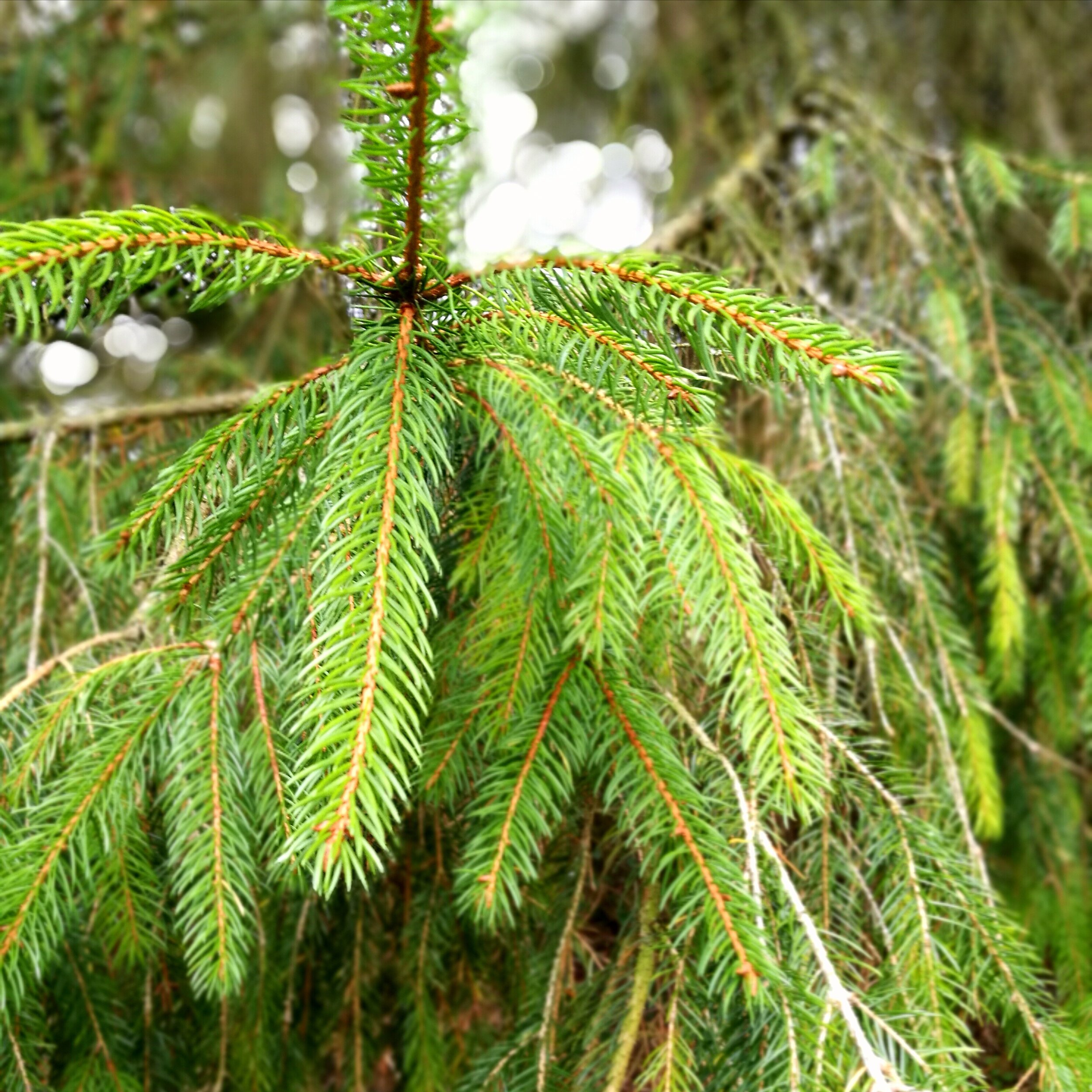Norway Spruce (Picea abies)
This is a tree I have been familiar with my entire life, as I grew up with two massive specimens in my wooded back yard at home in Ontario. There, as in the UK, it is a reintroduced or non-native, but common and familiar conifer. Norway spruce are gentle giants, home to a plethora of insects, birds and mammals among their long, drooping limbs. Both in cold winter months and in the heat of summer, these trees sound impressive in high winds, but their heavy load of cones, clustered at the topmost branches, make them occasionally hazardous to sit under! Look for spruce cone ‘mittens’ - piles of discarded cone scales where squirrels have eaten a cone like a corn-on-the-cob.
What they look like
Norway Spruce are tall and roughly triangular with pointed tops. They can be hundreds of years old. Mature specimens are often free of branches (or sport dead branches) for a significant height up their trunks, making these less-than-ideal climbing trees. The bark is typically flaky/scaly with sharp edges around the ‘plates, silver grey or tawny on the outside, with inner layers being golden brown, coppery, even purple. Needles are roughly an inch long and radiate out around the supple branches that droop away from woodier, horizontal branches. The needles are sharp and tough and diamond-shaped in cross-section. These are silvery green when mature, but bright green when young. Female flowers, which are bright purplish-red, tend to cluster at the top of the tree, with pollen-bearing, smaller and yellow male flowers further down. Cones are long, thin and ripen from green to a lovely warm, brown colour. They are smoothly scaled when unripe and moist, but bristle open when mature and dry.
Uses
Being coniferous trees, this spruce retains its green needles throughout the year, though for spruce tip tea, spring and early summer is when they produce soft, bright green new growth on the ends of their branches. Spruce tips yield an excellently flavourful tea - crush them and simmer them in water until their colour and lemony scent is released. They are rich in vitamin C. Spruce tip ointment, made by infusing oil with spruce tips slowly over low heat and then being blended with half as much beeswax or other hard wax, is soothing to the skin, anti-microbial and naturally repellent to insects. Spruce wood contains a lot of resin and it burns hot and fast, making it good as a fuel for quick, bright fires. Dry cones burn hot. Dry needles work well as kindling.


